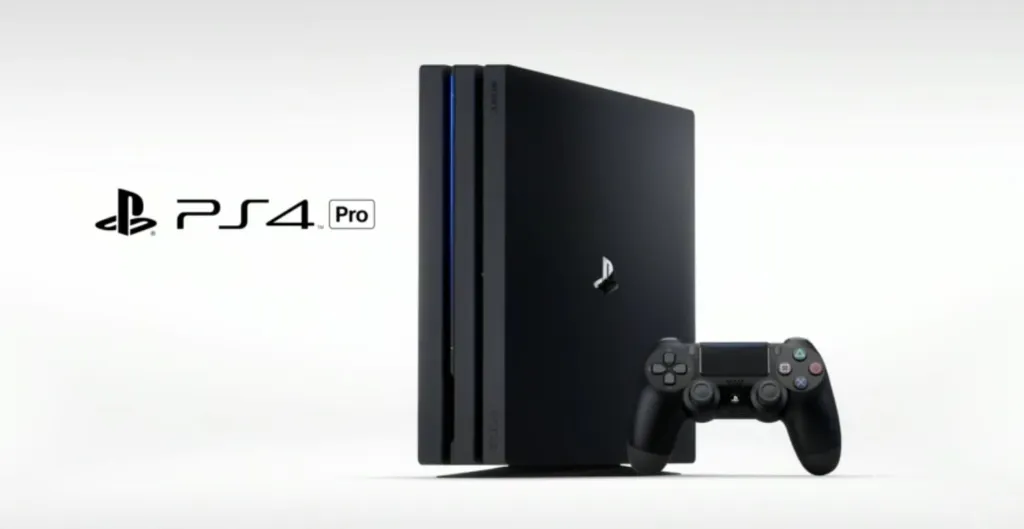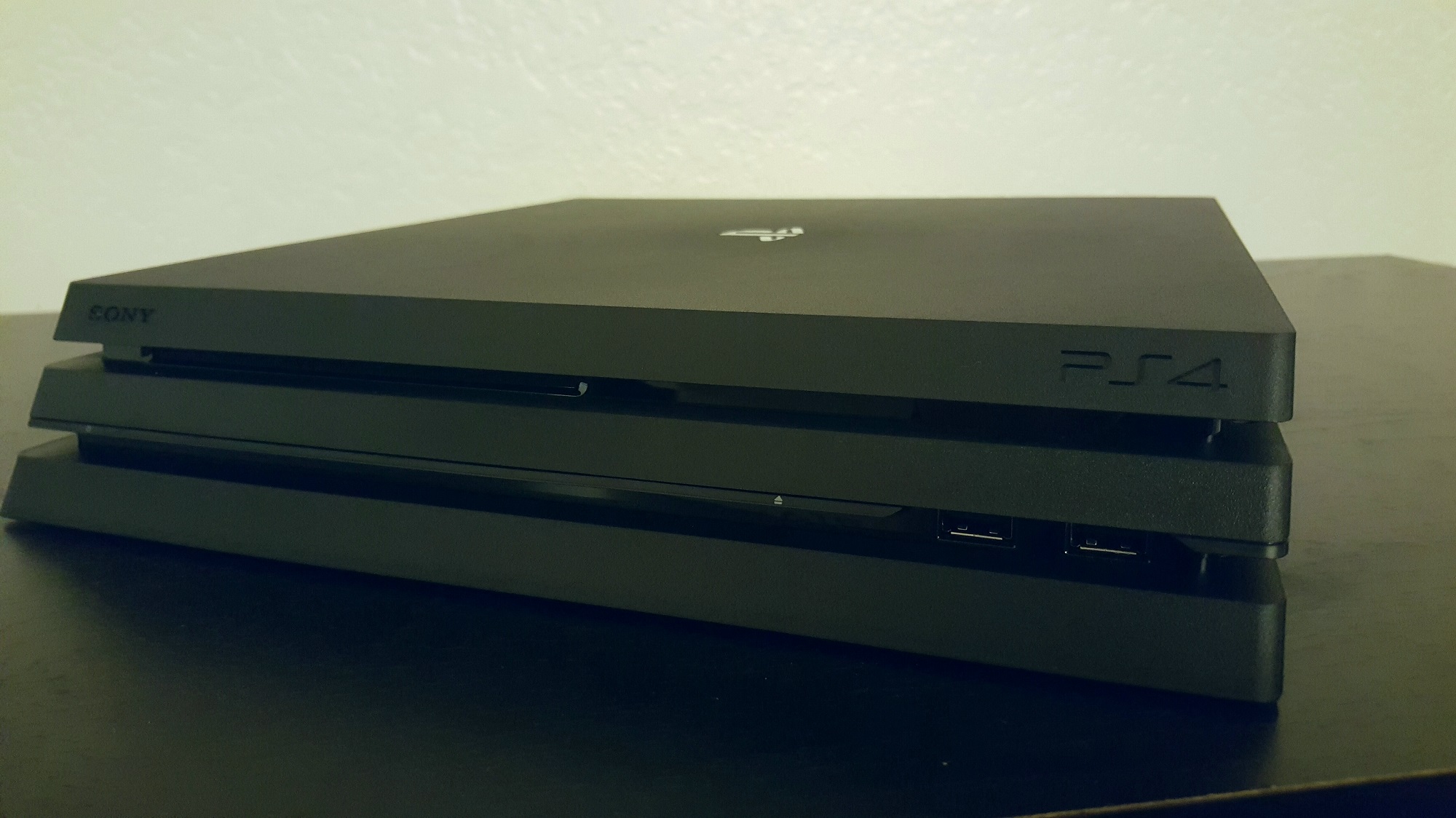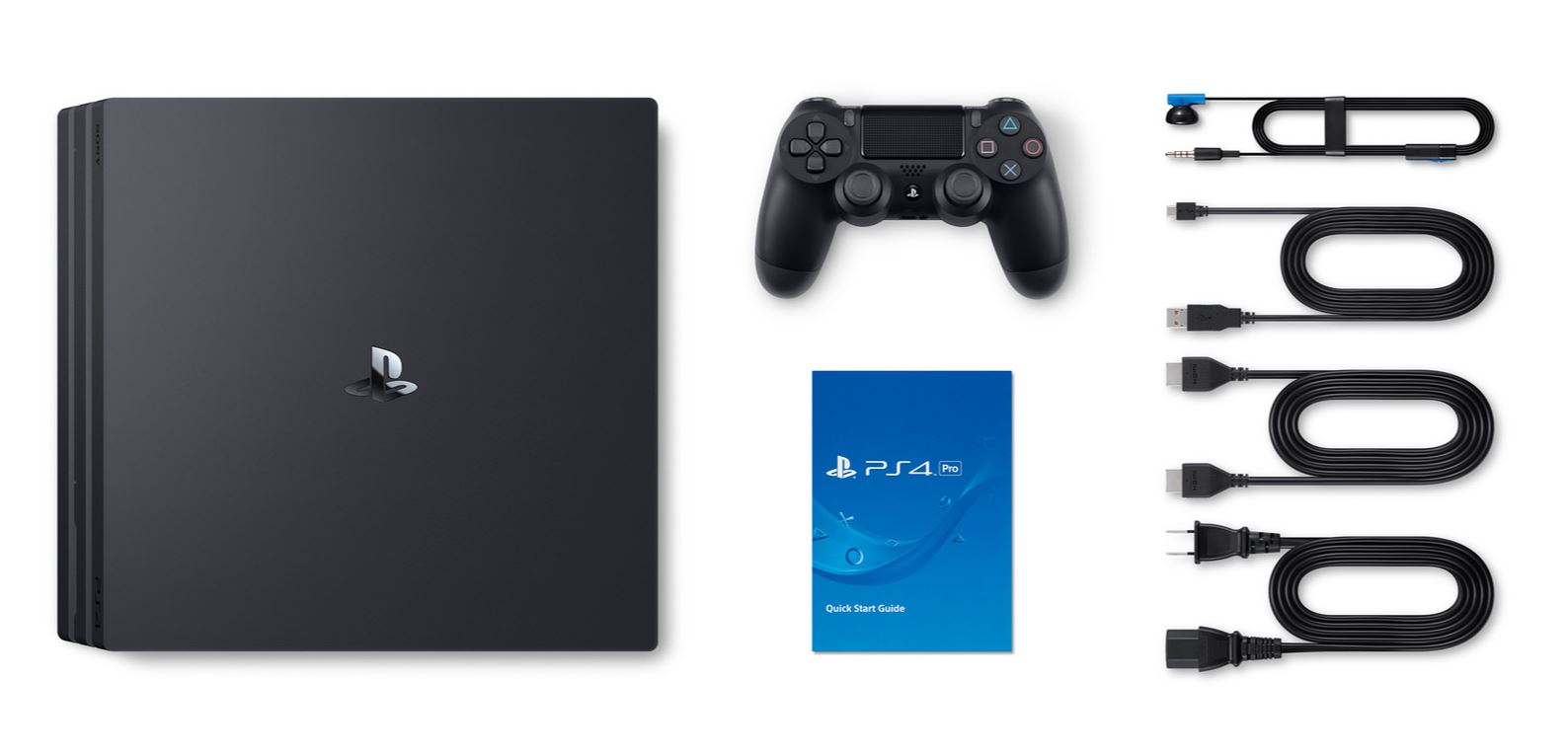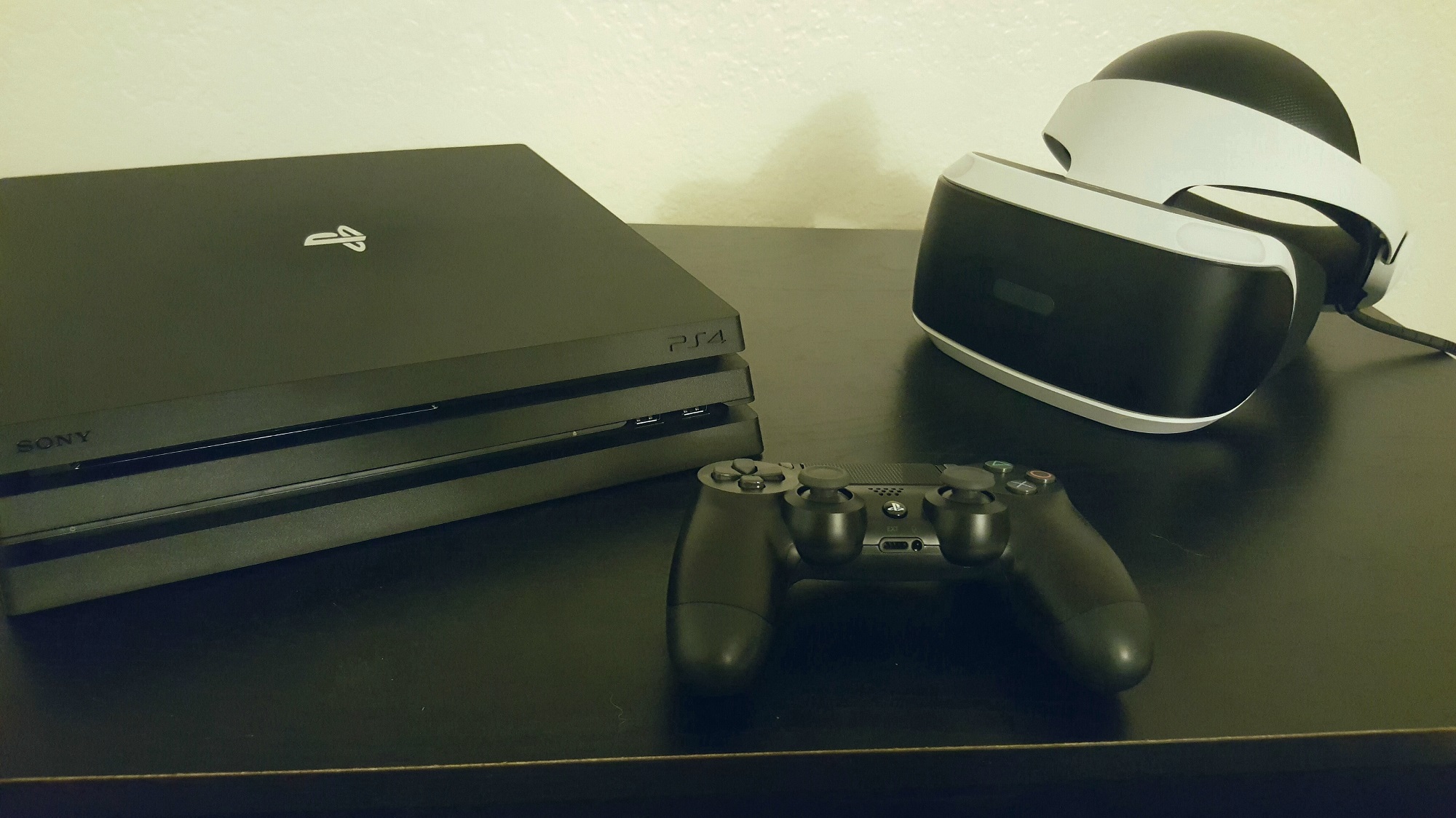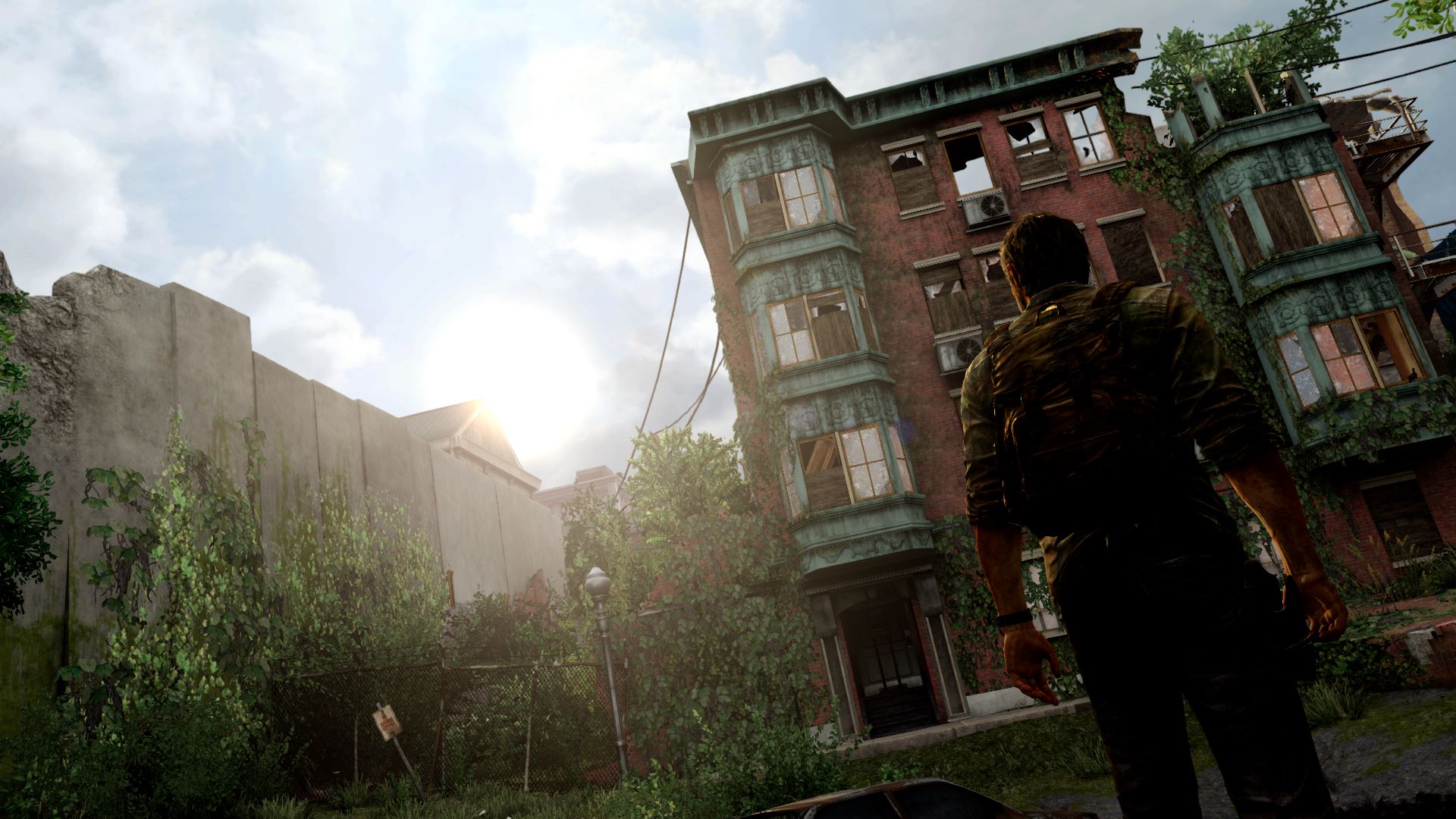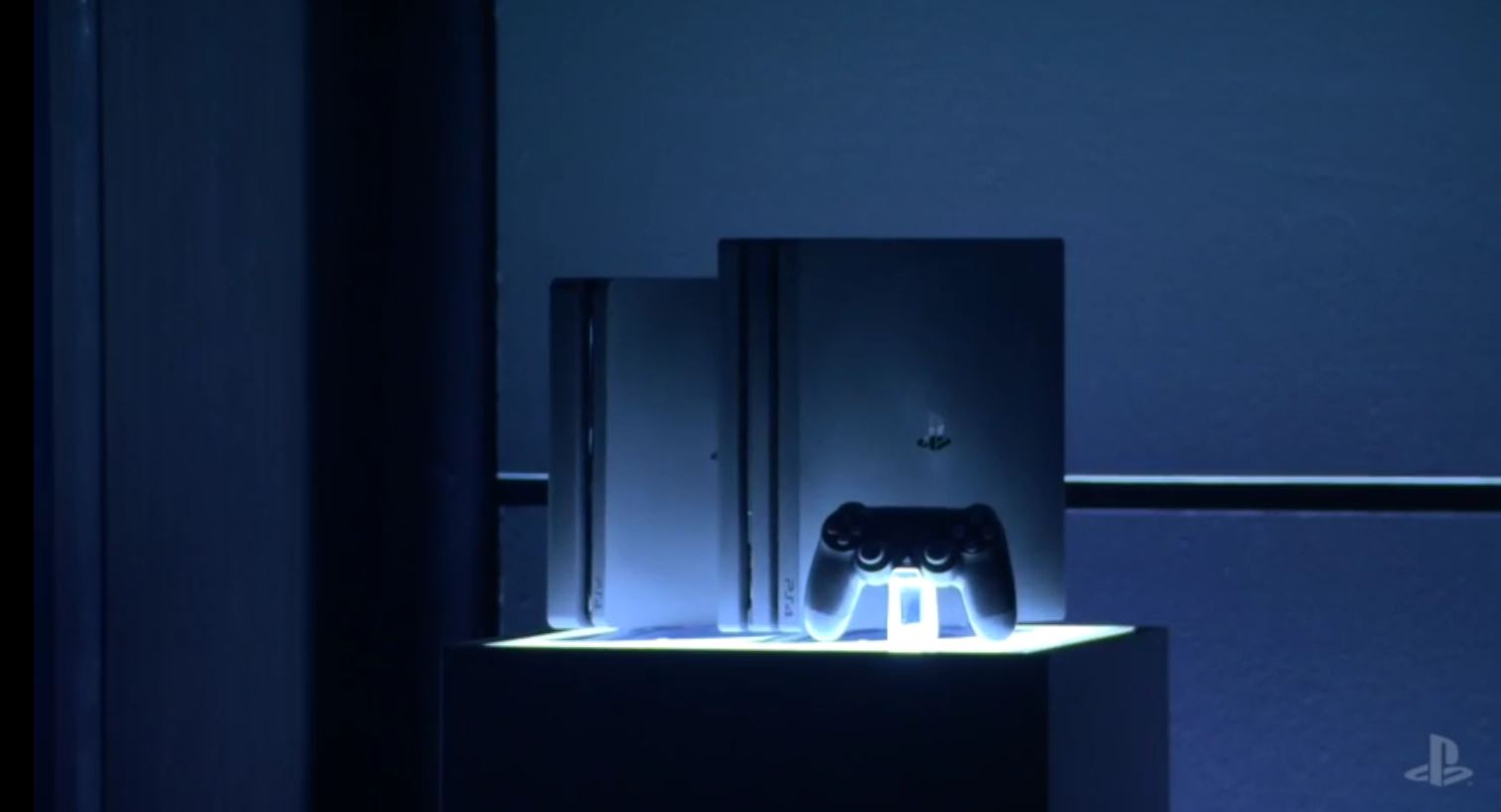Sony has been awfully busy so far in 2016. Less than a month since the PlayStation VR headset released into the wild, the gaming giant is already releasing a brand new iterative upgrade on its flagship gaming console. This week, the PlayStation 4 Pro will release, offering 4K resolutions, HDR content, and improved performance and stability. It’s far from what a theoretical PS5 might look like, but the PS4 Pro is still an improvement over the standard PS4.
If you’re curious about how well the PS4 Pro performs for standard 2D gaming, then this isn’t the review for you. I played Shadows of Mordor and The Last of Us Remastered a bit on the new PS4 Pro that Sony sent me for review because I’m as excited about 4K gaming as the next guy, but that’s not what the bulk of my assessment was focused on. For us here at UploadVR, what we care most about is the immersive medium of virtual reality.
So I decided to instead ask: Does the PS4 Pro really and truly improve the PS VR experience? Let’s dive right in. If you want to get an up-close look at the device, the new controller, and how it looks sitting alongside the VR headset, then take a look a look at our early PS4 Pro unboxing photos from last week.
PS4 Pro Design and Specs
Stylistically, the PS4 Pro looks awfully similar to the standard PS4. Generally, it has the same parallelogram-meets-sandwich-style design, although it is a bit sleeker. Instead of half the top being glossy and the other half matte, the entire outer casing now has a matte finish. The center PS logo on the top is reflective, which is a nice touch. On the bottom, the cross, square, circle, and triangle icons are used as the little rubber feet that keep the console from sliding around. It looks and works great both laying flat and standing upright. Surprisingly, it’s much quieter than the original PS4 in my experience, even after being left on for a while, and it never overheated for me.
In terms of specs, the PS4 Pro is definitely an upgrade where it counts most. For starters, it features an HDMI 2.0 out port, which is what enables the full 4K resolution and HDR for TVs that support it. Worth noting is that even if your TV is a 4K device, it may not be an HDR device, which adds additional vibrancy and depth to the visuals, so take note if that’s important to you.
Under the hood, the AMD CPU with eight jaguar cores is clocked at 2.1 GHz, compared to the standard PS4’s 1.4 GHz. And since the GPU is powered by AMD’s ‘Polaris’ architecture, it’s actually increased to 4.2 teraflops, from the standard model’s 1.84 — which is a big improvement. Thankfully, the 1TB of default storage is double the size of the standard model, but it still doesn’t support external storage drives, although you can upgrade it internally if you want.
For actually playing games, you’ll be treated to a nearly identical, but slightly improved, DualShock 4 controller as well. It feels better, more precise, and sturdier in your hands without sacrificing the original design. I was especially fond of the new material on the control sticks and the improved hand grip textures.
All this adds up to a machine that can display at much higher resolutions, more stable frame rates, crisper visuals, and increased horsepower. Load times feel shorter in games as well, although that is an entirely anecdotal observation. This console still pales in comparison to a top-of-the-line custom-built PC, but it offers an admirable improvement over Sony’s base model.
Console Setup
In terms of setup, if you do not currently own a PS4 at all, then it couldn’t be easier. Plug the power cord into the wall, plug the HDMI cord into the best socket your TV’s got (with the highest refresh rate, resolution, and HDR support of course,) and ideally jam the ethernet cord in as well to enjoy the sweet taste of hard-wired internet access. That’s really all you have to do as a bare minimum.
If you’ve got a PS4 already, things get a little more time consuming. You can actually transfer all of your installed games, save files, media captures, settings, and essentially everything else quite simply. Just make sure both consoles are logged onto the same PSN account and the same WiFi signal, then link them up with an ethernet cord, and follow the on-screen prompts. While it’s relatively easy to do, it’s still cumbersome. Roughly 300GB of data from my old PS4 took a little over an hour to fully transfer.
If you are setting up your PS VR with your new PS4 Pro as well, then it is worth noting that the Processor Unit that was required for your headset is not only still required, but it also disables HDR content. So that means if you want to view any HDR content, the HDMI cord must go directly from the PS4 Pro to your TV, without passing through the Processor Unit at all. It’s a bit of an annoyance, but it’s easily solved in most cases.
The PlayStation VR Experience on PS4 Pro
This is the big question for a lot of people: Does the PS4 Pro really improve the PS VR experience? According to Greg Koreman, co-foudner of Impulse Gear, the company that’s developing Farpoint, back when the PS4 Pro was first unveiled he told UploadVR in an interview that, “Across the board, it’s more crisp. That’s because we are rendering roughly twice as many pixels. So absolutely everything will look clearer.” But since the lenses themselves inside the headset aren’t displaying at 4K resolution, why does any of this matter?
Well, it’s a complex answer. Objectively speaking, yes, PS VR games do look better when running on a PS4 Pro. After setting them both up, side-by-side, on the same television using the same headset, I can confirm that games are noticeably sharper and crisper, especially if they have received an official patch incorporating support for PS4 Pro. Games like Battlezone and PS VR Worlds were patched ahead of time for testing, but even games like Driveclub VR, which didn’t have official Pro patches yet, looked crisper and smoother inside the headset.
Since adding Pro support is entirely up to the developers, it’s a bit of a mixed bag still. EVE: Valkyrie could arguable benefit from it the most, as the jagged edges and intense action could use the extra boost that the Pro affords, but I didn’t notice much of a difference in that one yet.
Ultimately though, most of the PS VR games are nearly identical, even if they have been patched with Pro support. No matter what spec sheet you look at, marketing material you read, or trailer you watch, at the end of the day they are all still PS4 games running on a PS4 inside of a PS VR. It won’t ever approach the same level of detail possible on a high-end gaming PC powering an HTC Vive or Oculus Rift. The PS VR is still a less powerful, but awfully capable headset — even when propped up by the additional strength of the PS4 Pro.
Does it offer marginal enhancements? Yes. Are those enhancements enough to persuade you to go out and buy a new console? That depends on a lot of factors. Here is a full list of expected launch support for PS VR games on the PS4 Pro.
What About 4K Gaming and Video?
Even though I was mostly evaluating the PS VR enhancements, I did test out the non-VR 4K features and came away impressed. There is a noticeable difference for games that receive upgraded patches enabling native 4K displays. However, since all developers are still required to support the standard model PS4 as well, that means that it’s going to be supported only on a case-by-case basis.
Some games will just be upscaled to 4K, some will run natively. Some games will run in 4K but only at 30FPS, while other games will run in 1080p but at 60FPS. Some games will see enhanced visuals, load times, and draw distances on a PS4 Pro even on a non-4K TV, while other games will run and play noticeably better on a premium 4K television.
It’s a bit all over the place and you should do research about which games receive which kind of support before diving in.
As for video, the PS4 Pro does support 4K streaming, but not 4K Blu-ray playback. It’s a baffling decision, especially considering the Xbox One S supports native 4K Blu-ray playback. If you’re enjoying videos on Netflix, YouTube, or another streaming service that happen to be in 4k though, then you’re fine.
Final Verdict: Should You Buy A PS4 Pro?
As is the case most often with these sorts of situations, you likely already know if the PS4 Pro is a device for you. If you’re the type of person that already has an HDR-capable 4K television, then upgrading to a marginally better PS4 Pro is probably a no-brainer decision. However, if you don’t have a 4K TV, aren’t overly concerned with the intricacies of your game’s visual fidelity, or already enjoy the quality of your PS VR experiences, then the PS4 Pro frankly doesn’t offer you a whole lot of advantages.
But if you’ve already got a stellar TV, don’t have a PS4 yet, or want to enjoy the highest-quality VR experience possible on a console, then you might want to look at getting a PS4 Pro. Even then though, wait for a bundle or a sale that catches your eye — there’s no rush. The Standard, Slim, and Pro PS4 models all play the exact same content either way.
For any additional questions about the PS4 Pro, I highly recommend checking out Sony’s official FAQ. You can also read our full review of the PS VR headset itself right here.

